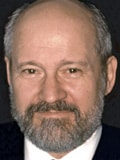
Stephan Helgesen
The Hatch Act says a sitting president must not campaign from federally-owned facilities and must keep his campaign costs separate from his official costs. But there are plenty of ways to get around that.
There are four Republican candidates for president, and it’s pretty easy to figure out what they spend on campaigning as they must regularly identify and report those expenditures along with their campaign contributions.
It’s a very different kettle of greenbacks when it comes to figuring out what the real costs are when a president campaigns.
Here’s something to think about. The Hatch Act (passed in 1939) says that an incumbent/candidate like a sitting president must not campaign from federally-owned facilities and must keep his campaign costs separate from his official costs.
That should mean having two of most things like Blackberries, e-mail accounts, cars, etc. For example, you can’t make campaign calls from U.S. government offices and you can’t travel to campaign speeches/dinners in a government vehicle.
There are plenty of ways to get around that, however. Meetings, speeches and dinners can be dual-purpose events – events where the president’s presence is desirable to advocate for, or speak on, national policy issues or give interviews to the media.
And while he’s at the venue already, he might as well hold a rubber chicken fundraising dinner at $35,800/plate (the maximum allowable contribution an individual may give to a political party in a given year – see Federal Election Commission regulations at fec.gov).
Later, the party can openly support his campaign with all that money raised.
At this point in their respective campaigns, President Obama has held 100 fundraisers compared to former President George W. Bush’s 56. To me, that says that George Bush was either not motivated, too confident or was too busy focusing on the country’s business.
It could be said that Barack Obama is either a more active campaigner, is worried that he won’t have enough money to beat the Republican nominee, or just likes the limelight.
Let’s pretend for a moment
While firewalls must be set up between the campaign and the office staff, it’s really hard to identify which of the hidden costs associated with campaigning are paid by the taxpayers.
Let’s pretend you and I are the president for a moment. You wake up in the morning, review your secret CIA and DOD briefings, have your breakfast, read the papers and speak with your chief of staff and press secretary to see what’s shaking out there in America.
Your mind is not firewalled, however, and during the conversations, you spot a few events that present opportunities for making a campaign pitch.
You spend a fair amount of time discussing the venue, the speech, the possible pre- and post- speech interviews, the local and national spin, the travel and how this event might benefit the country. And, in the back of your mind, how it will help your campaign.
At this point, it’s a presidential event and not a campaign event.
You call your campaign liaison to speak with him about the event. He suggests that you hold a fund raising luncheon and dinner built into the presidential event. (After all, the president has to eat, doesn’t he?) You agree and go over the potential donors list, making sure that you haven’t overlooked any high-rollers.
The event goes on the official schedule and is communicated to the Secret Service, which sets a massive operation into motion involving visits to the site, liaison with local security and law enforcement, venue managers, interviews and more, all costing the taxpayers a considerable chunk of change.
It’s a few days from the actual event, and you decide it would be nice to bring your family along, so a few more seats on Air Force One are booked for your children and the First Lady (and her chief of staff and protocol assistant, who are added to the passenger manifest that already includes your top staffers, speech writers, personal physician, Secret Service contingent, selected media from the White House Press Pool, the White House photographer and that nice military man who holds the launch codes to our missiles).
In case you’re wondering, you won’t have to take the mid-town bus to the event. Your limousine and 4-6 other official vehicles depart Washington ahead of you in a C-130 transport so that they’re all gassed up and ready for you when you land at your destination.
It’s wheels up time. So far, the cost of your trip is way up in the six-figure range. And since this is mostly a presidential event, your re-election campaign won’t be writing a big check to the Treasury for the costs.
Instead, they’ll be depositing a thick wad of $35,800 checks from eager supporters, proving once again that Americans are world leaders when it comes to multi-tasking… and using other people’s money.
Stephan Helgesen is a former U.S. diplomat and former director of the N.M. Office of Science and Technology. He is currently the honorary German consul in New Mexico and heads up his own export consulting company. He can be reached at helgesen@2ndopinionmarketing.com.